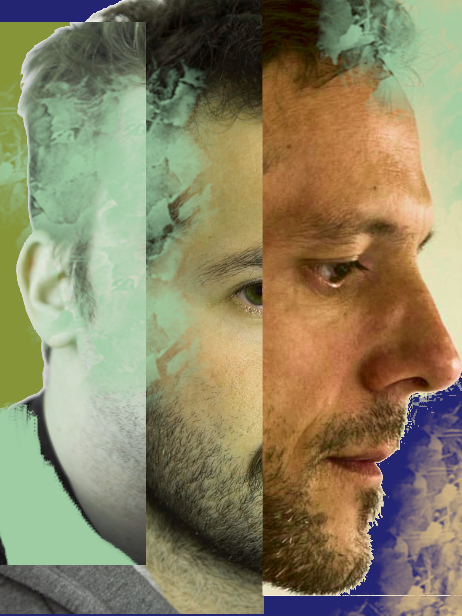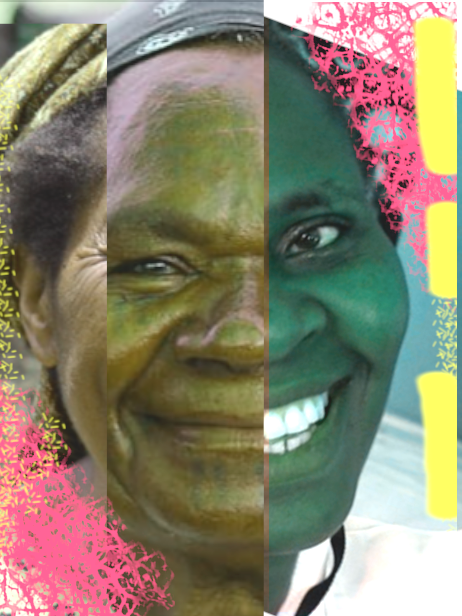Marginalisation and Privilege
This activity should take you about 15 minutes to complete.
Before doing this activity, take a moment to reflect on the roles that racism, sexism, homophobia, ableism, ageism and transphobia play in your life. What impact have these things had on your day to day experience? on your life chances and choices? On the lives of those around you?
Now read about John and Angela. As you read each one, think about the following questions:
- What impact does racism, sexism, homophobia, xenophobia and ableism have on John’s day to day life, his choices and his chances?
- What impact does racism, sexism, homophobia, xenophobia and ableism have on Angela’s day to day life, her choices and her chances?
- Do you think that John is more or less affected by racism, sexism, homophobia, xenophobia and ableism than Angela?

John is a 35 year-old white cis heterosexual man. He is married with two children. John lives by choice in the country he was born. He is well-educated, has no disabilities, has been healthy all his life and has a well-paid job that he enjoys.
Angela is a 64 year old Black woman living with HIV. She had to flee her native Uganda leaving her adult children and all her family behind because of threats made to her life when her HIV status became known. She is now living in Ireland and has refugee status but, despite being well qualified as a nurse, has found it very hard to get any employment due to her age and suffering from depression.

We might say that these factors have very little impact on John’s life as he has probably never suffered their ill effects, while Angela has been badly affected by all of these factors.
Intersectionality theory would describe Angela is complexly and intersectionally marginalised. In Uganda, where she comes from, she suffered from the ill effects of stigma associated with having HIV. HIV stigma is closely related to homophobia (it is stigmatised because of its association with gay and bisexual men and homosexuality), sexism and ageism (having HIV contravenes gender norms and expectations around being both a woman and older) and indeed ableism (which stigmatises disability and health issues). In the UK, she suffers from the ill effects of ageism and ableism as attested to by her difficulty in getting employment. As a Black refugee she almost certainly will have come up against the ill effects of racism and xenophobia. No one factor predominates, but they all coalesce to create Angela’s specific and complex experience of intersectional marginalisation.
However we could also say that John is equally, but differently, impacted by all these factors.
That is, that John is complexly and intersectionally privileged by these factors. The security and support that John experiences throughout his life are all the results of a society that is organised to favour white people over racially minoritised people, men over women, cis over trans, heterosexual over homosexual, native-born over immigrant and younger over older. As with Angela, no one factor predominates, but they all coalesce to create John’s specific and intersectional experience of privilege.
The fact that John’s privilege is ‘taken for granted’, that he would be considered ‘the norm’ shows how deeply engrained and entrenched are the social and political processes that privilege John, ensuring that he finds it easier to live a longer, healthier and wealthier life than Angela.
The very different situations that John and Angela find themselves in may have little or nothing to do with their own attitudes and beliefs. John does not have to be personally racist or sexist to benefit from the privilege that societal racism and sexism bestows on him. Likewise, Angela could have very racist and sexist attitudes and beliefs and still be the victim of racism and sexism herself.
What does this tell us?
It tells us that racism and sexism and ableism are not just ‘bad attitudes’ that individuals and groups have, but they are also social and structural processes. In other words they are integral to the ways in which societies and nations organise themselves and are organised. They ensure that certain groups maintain and increase power while others remain less powerful. This is why, when we say we are fighting racism, we are not just trying to change people’s hearts and minds, but we are also fighting the often invisible social processes and structures that promote white supremacy.
So it’s important to remember that things like racism, ageism, sexism etc not only disempower or marginalise one group but they also empower or privilege another. Does this give you a perspective on why racism, sexism, homophobia etc are so hard to get rid of? Or why people are so attached to them? Because true anti-racism or anti-sexism does not only entail one group gaining power, but another group losing some of their power or privilege. Moreover, things like racism etc maintain the status quo
Well done! You have now finished all the learning in this topic area. Want to learn more? Just go back to the Topics Landing Page and click on another topic. Or you can delve deeper into this topic by taking a look at the resources we’ve compiled.